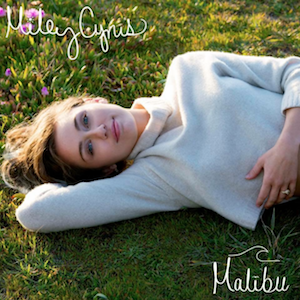 Charli XCX’s “I Love It,” a collaboration with Swedish production duo Icona Pop, is an unrelenting blast of teenage rebellion, adrenaline, and electronic exuberance. Released in 2012, the track immediately became a defining anthem of the early 2010s pop landscape, marking a turning point for both Charli XCX’s career and the evolution of mainstream dance-pop. With its aggressive, minimalist production, shouted vocals, and anarchic attitude, “I Love It” doesn’t just invite listeners to join the party — it forces them into it, leaving no room for subtlety or hesitation. The song is a masterclass in controlled chaos, transforming raw energy into an infectious and enduring hit.
Charli XCX’s “I Love It,” a collaboration with Swedish production duo Icona Pop, is an unrelenting blast of teenage rebellion, adrenaline, and electronic exuberance. Released in 2012, the track immediately became a defining anthem of the early 2010s pop landscape, marking a turning point for both Charli XCX’s career and the evolution of mainstream dance-pop. With its aggressive, minimalist production, shouted vocals, and anarchic attitude, “I Love It” doesn’t just invite listeners to join the party — it forces them into it, leaving no room for subtlety or hesitation. The song is a masterclass in controlled chaos, transforming raw energy into an infectious and enduring hit.
From the very first second, “I Love It” establishes its uncompromising tone. The track opens with pounding synth stabs and a rigid electronic drum pattern, immediately signaling that this isn’t a passive listening experience. Icona Pop’s aggressive production style complements Charli XCX’s vocals perfectly, creating a soundscape that’s both jagged and irresistible. Every element feels designed to provoke movement, from the relentless beat to the intentionally distorted synth lines. By stripping the song down to its most essential components — drums, synths, and vocals — the track achieves a raw, kinetic energy that is both modern and timeless.
Vocal Intensity and Emotional Exuberance
Charli XCX’s performance on “I Love It” is one of the defining features of the song. Her vocals are shouted, raw, and exuberant, eschewing traditional melodic polish for a more urgent, visceral delivery. When she belts out the now-iconic line, “I don’t care, I love it!”, it’s less a statement and more a battle cry. There’s an almost punk-like abandon in her performance, a sense that rules don’t matter and that expression is everything.
The vocal delivery perfectly matches the lyrical content, which centers around reckless abandon, hedonism, and the thrill of living in the moment. There’s a deliberate simplicity to the words — they aren’t meant to be dissected for complex meaning. Instead, they operate on a primal level, conveying energy, freedom, and defiance. Charli XCX’s voice carries both irreverence and joy, making it impossible not to be swept along in the frenzy.
The interaction with Icona Pop’s vocals adds another layer of chaotic charm. Their raw, shouted delivery complements Charli’s, turning the chorus into a multi-layered explosion of sound. The overlapping voices create a sense of crowd participation, making listeners feel like they’re part of a raucous, ecstatic mob. This vocal layering is simple yet genius: it amplifies the song’s energy without adding unnecessary complexity, embodying the song’s “less is more” ethos.
Minimalist Production, Maximum Impact
One of the most remarkable aspects of “I Love It” is its minimalist production. Unlike the dense arrangements of contemporary pop, the track thrives on stark contrasts and sparse textures. The synth stabs are piercing and angular, the drum machine hits are crisp and precise, and the bassline is unrelenting in its simplicity. There’s a rawness to the production that feels intentionally rough around the edges — almost unfinished — and yet this rawness is precisely what gives the song its character.
The minimalism also creates space for the vocals to dominate, allowing the emotional intensity of Charli XCX and Icona Pop to shine. Every shout, pause, and breath is audible and impactful, adding to the sense of immediacy and urgency. The song’s arrangement builds tension and release masterfully, with the chorus acting as a cathartic explosion after each verse.
This stripped-down, aggressive approach to pop production was relatively novel at the time, predating what would later be called hyperpop. “I Love It” serves as a bridge between traditional dance-pop and the glitchy, maximalist electronic sounds that would dominate later in the decade. It proves that pop can be both simple and revolutionary, using minimal tools to maximum effect.
Lyricism and Rebellion
On the surface, “I Love It” might appear lyrically simplistic, but its power lies in its immediacy and universality. The chorus — “I don’t care, I love it!” — encapsulates the song’s ethos: defiance, self-expression, and unfiltered joy. The lyrics aren’t concerned with storytelling or narrative complexity; they’re about the experience of liberation and the thrill of throwing caution to the wind.
This simplicity is key to the song’s appeal. The repeated line functions as a mantra, a chant that’s easy to remember and impossible to ignore. It transforms the song from a personal statement into a collective anthem. Audiences can project their own experiences onto it — whether partying with friends, embracing risky behavior, or simply reveling in the freedom of self-expression.
The verses add contextual flavor, describing reckless nights, chaotic relationships, and unrestrained fun. Lines like “You’re on a different road, I’m in the Milky Way” suggest a disconnect from convention, an embrace of personal trajectory regardless of societal expectations. Together with the chorus, the lyrics celebrate autonomy, rebellion, and joy — a heady mix that resonates particularly strongly with youth culture.
Cultural Context and Impact
“I Love It” arrived at a time when pop music was increasingly embracing electronic influences and danceable rhythms, yet it stood apart due to its sheer audacity. The early 2010s saw the rise of EDM-influenced pop and radio-friendly synth tracks, but few songs matched the raw, almost anarchic energy of “I Love It.” Its punk-pop attitude and shouted delivery harkened back to the DIY ethos of punk while embracing the accessibility of mainstream pop.
The song’s impact was immediate. It became a global hit, reaching the top 10 in multiple countries and cementing Charli XCX’s reputation as a fearless, forward-thinking pop artist. More importantly, it set the stage for her later experiments with genre, production, and vocal manipulation, establishing her as a key figure in the evolution of hyperpop and avant-pop aesthetics.
“I Love It” also resonated culturally because of its relatability. Its themes of rebellion, emotional recklessness, and carefree indulgence spoke directly to a generation seeking catharsis and identity in the early 2010s. It wasn’t just a song — it was a statement, a declaration of independence from conformity and expectation.
The Song as Performance
Part of the enduring appeal of “I Love It” is how performative it is. On stage, the song transforms into a riotous, high-energy anthem. The shouted vocals, rapid tempo, and minimal instrumentation make it ideal for live settings, where the audience can participate fully in the chaos. Concert performances amplify the song’s ecstatic energy, turning it into a communal experience.
The structure of the song — alternating verses and choruses punctuated by repeated shouts — mirrors the physicality of live performance. It invites movement, shouting along, and full immersion. The track’s production is already high-energy, but in a live context, it becomes almost kinetic, a tangible, shared experience of exhilaration.
Sonic Innovation and Legacy
“I Love It” is noteworthy not only for its immediate impact but also for its lasting influence on pop music. Its minimalist, aggressive production style and shouted, emotionally direct vocals prefigured trends in hyperpop, electronic pop, and experimental dance music. Artists like SOPHIE, 100 gecs, and even later Charli XCX tracks owe a debt to the audacious approach exemplified here.
The song demonstrated that pop could be confrontational, chaotic, and joyful all at once. It broke the mold of polished, radio-friendly pop, proving that emotional intensity and sonic experimentation could coexist with chart success. This influence reverberates through the decade, making “I Love It” not just a hit, but a foundational track in the evolution of modern pop aesthetics.
Emotional Resonance
At its core, “I Love It” succeeds because it captures a raw, universal emotion: the exhilaration of living without inhibition. Listeners respond to its immediacy, its unapologetic attitude, and its sheer kinetic energy. There’s a cathartic quality to the track, a release of tension and societal expectation through sound and performance.
This emotional resonance is heightened by the track’s relentless energy. From the first synth stab to the final shouted chorus, “I Love It” never lets up. It demands attention, encourages participation, and rewards listeners with a sense of liberation. It’s the musical equivalent of throwing oneself into the chaos and emerging exhilarated, changed, and undeniably alive.
Conclusion: A Modern Anthem of Recklessness
Charli XCX’s “I Love It” is a landmark pop track, a masterclass in energy, minimalism, and emotional directness. Its combination of shouted vocals, aggressive production, and anarchic spirit makes it a defining anthem of early 2010s pop, a track that remains vibrant and relevant even a decade later.
The song’s genius lies in its simplicity and audacity. It strips pop music down to its most essential elements — rhythm, melody, and raw emotion — and uses them to maximum effect. Charli XCX’s performance, coupled with Icona Pop’s production, creates a sense of immediacy, urgency, and uncontainable joy.
“I Love It” isn’t just a song to listen to; it’s a song to experience. It embodies rebellion, freedom, and the thrill of self-expression, capturing the essence of a generation while influencing countless artists who followed. It’s a declaration, a manifesto, and a euphoric celebration of chaos — and it continues to resonate because its energy is impossible to ignore.
Decades from now, “I Love It” will still be recognized as a watershed moment in pop music: a song that refused to play it safe, refused to moderate its intensity, and in doing so, created something unforgettable. Charli XCX and Icona Pop took the raw elements of energy, emotion, and defiance and forged them into a modern anthem, one that will continue to thrill and inspire listeners for years to come.


